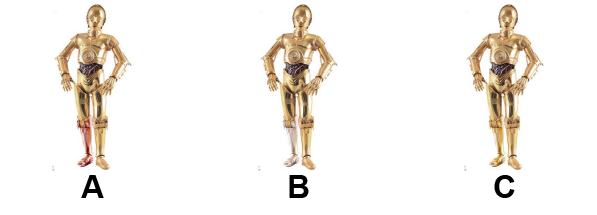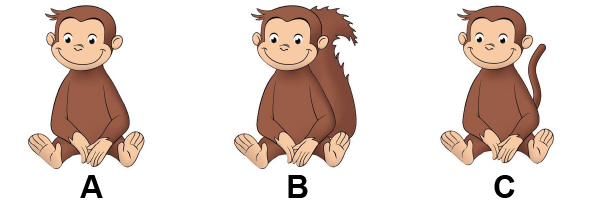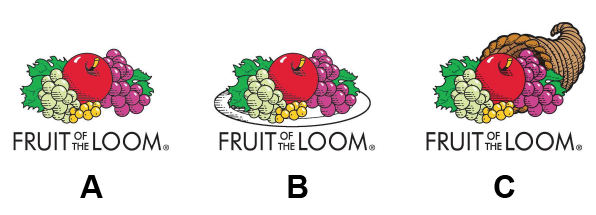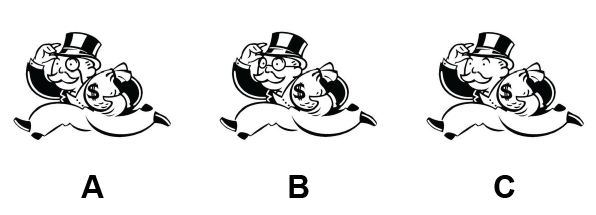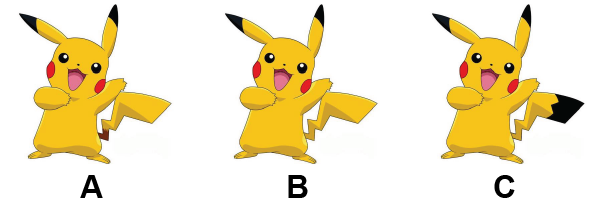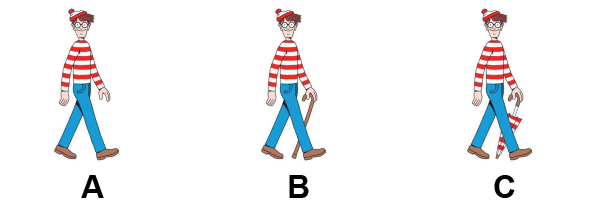New Research Shows Consistency in What We Misremember
The Brain Bridge Lab study on the Visual Mandela Effect found widespread false memories of famous logos and characters.
By Sarah Steimer
If you had to describe Rich Uncle Pennybags — the Monopoly mascot — would you mention his top hat? His mustache? How about his monocle? If so, you would almost be correct: He never had a monocle. Yet many people confidently list the accessory.
A paper forthcoming and currently available in preprint Psychological Science about the Visual Mandela Effect found that people have consistent, confident, and widespread false memories of famous icons. It’s the first scientific study of the internet phenomenon, and it adds to a growing body of evidence showing consistency in what people remember — but by demonstrating new evidence that there is also consistency in what people misremember.
“This effect is really fascinating because it reveals that there are these consistencies across people in false memories that they have for images they've actually never seen,” says Wilma Bainbridge, assistant professor in Psychology and principle investigator at the Brain Bridge Lab at UChicago.
Motivated by reports of misremembered images online, Bainbridge and Deepasri Prasad, a Brain Bridge lab manager and research assistant, compiled images and their false-remembered counterparts — mostly from popular culture — from the online discussions. Added to this mix of previously reported misremembered images were other pop culture icons and characters that the researchers made small tweaks to that would further test their theory.
The team set out to test four ideas. The first and main goal was to determine how widespread and consistent the Visual Mandela Effect was across individuals for the 40 different icons that they assembled. They also wanted to see where people were still making these errors — even if they're very familiar and confident with their responses and with the characters.
Second, they wanted to know the underlying causes: Is it that people are just not looking at where this error is on the image? In the third experiment, they looked to quantify how common these false memory images are in the world by looking at Google Images. In the fourth experiment, they studied whether people spontaneously produce these errors: If asked to draw an image from memory, they often make the same errors.
“We found that there really is a strong effect where people are reporting a false memory for an image they've actually never seen — because you've never seen Pikachu with a black tip on the tail,” Bainbridge says, referring to a common false memory of the Pokémon character. “What's more is that people tend to be very confident in picking this wrong image. And they also report that they're pretty familiar with characters like Pikachu — yet they still make these errors.”
The researchers haven't yet been able to pinpoint a single reason for why this happens, but they have eliminated a few possibilities. The visual differences aren’t striking across the different versions, so people aren’t looking at the images differently. So even if people look at the correct version of that part of the image (say, Pikachu’s tail), they still make this error.
They also ruled out schema theory as a universal explanation, which suggests we fill in the information that’s missing based on our associations. This would, for instance, explain why so many people misremember Rich Uncle Pennybags with a monocle, because we associate the accessory with wealth. But the researchers found examples where this doesn't fit. For example, people often falsely remember the Fruit of the Loom logo having a large cornucopia behind it. — but cornucopias aren’t very common in real life.
“We had an alternative wrong version as well,” Prasad says. “They could have picked the correct Fruit of the Loom logo, the Fruit of the Loom logo with the cornucopia, or the Fruit of the Loom logo with a plate underneath it. The fact that they chose cornucopia over plate, when plates are more frequently associated with fruit, is evidence against the idea that it's just the schema theory explaining it.”
One of the big questions in the Brain Bridge laboratory is why people remember certain things over others. So far, the researchers have found that people tend to remember and forget the same things.
“You would think that because all of us have our own individual experiences throughout our lives that we'd all have these idiosyncratic differences in our memories,” Bainbridge says. “But surprisingly, we find that we tend to remember the same faces and pictures as each other. This consistency in our memories is really powerful, because this means that I can know how memorable certain pictures are, I could quantify it. I could even manipulate the memorability of an image.”
In finding that there’s an intrinsic ability in some images to create false memories, the research suggests we may be able to determine what could create false memories. This could be useful in eyewitness testimony, for example, where you want to ensure people don’t accuse the wrong suspect. Some faces are really memorable or really forgettable, while some can create many false memories. If an innocent suspect in a lineup tends to have many qualities that create false memories, they could be falsely identified. To avoid bias, the solution could be to choose other individuals whose faces also cause false memories — which would even the playing field.
“It also has some interesting implications in terms of logo design or how to select photographs for educational material and advertisement, because you want people to have accurate memories,” Bainbridge says, “You don't want them to misremember information. And that actually relates a lot to some other important topics right now, including what images are used in the media.”
 THE UNIVERSITY OF CHICAGO
THE UNIVERSITY OF CHICAGO




